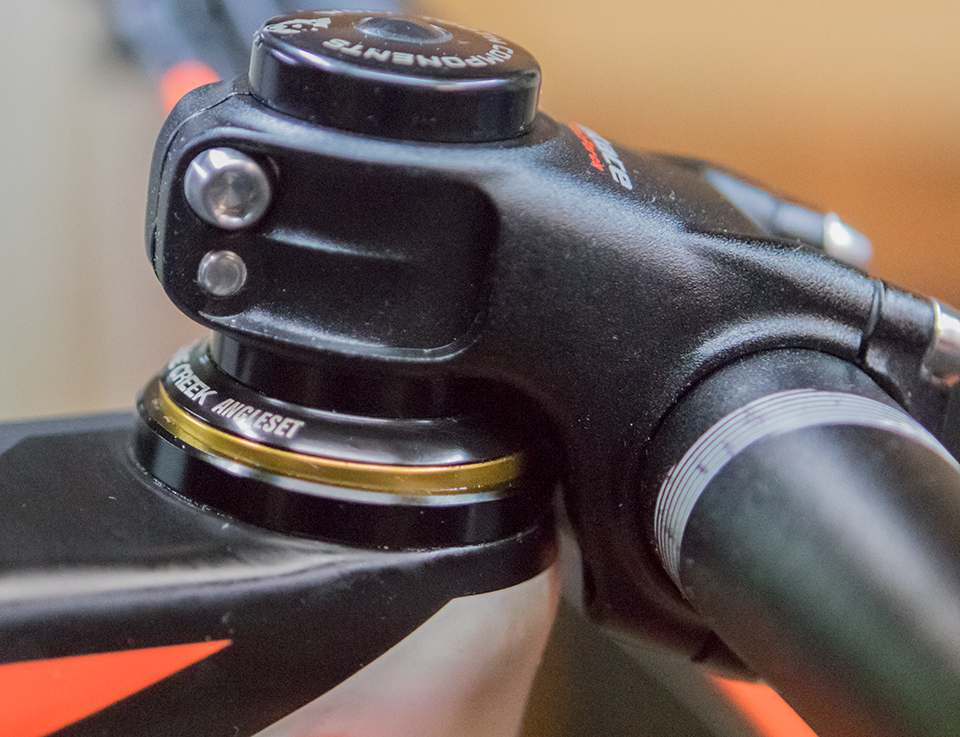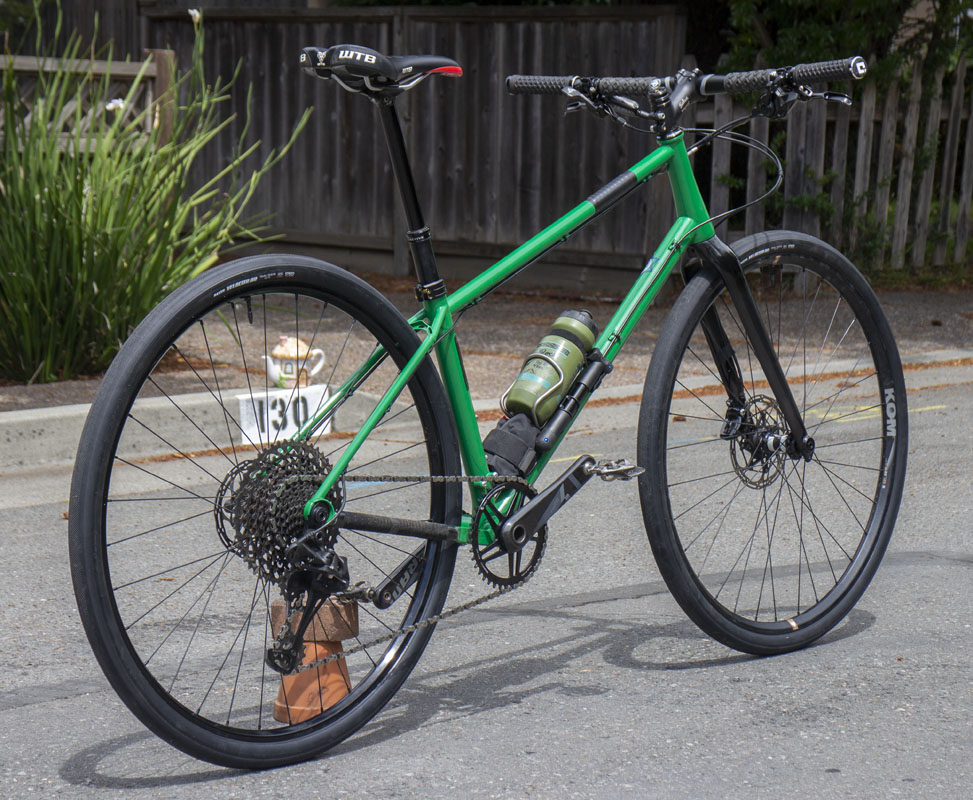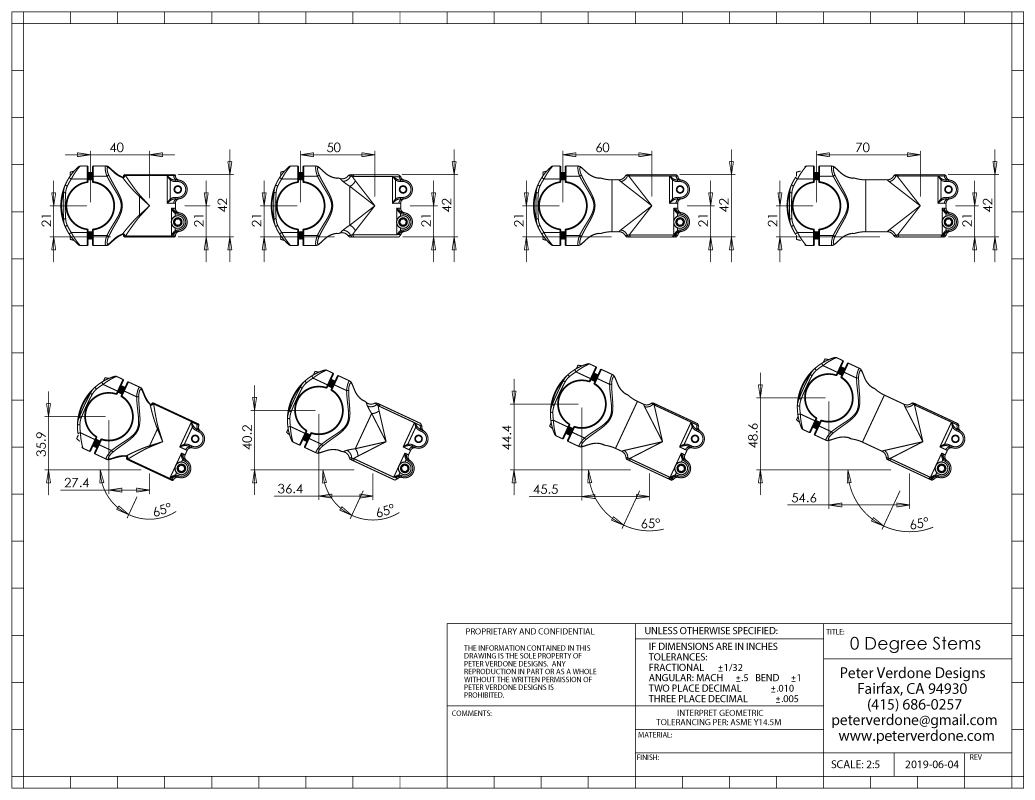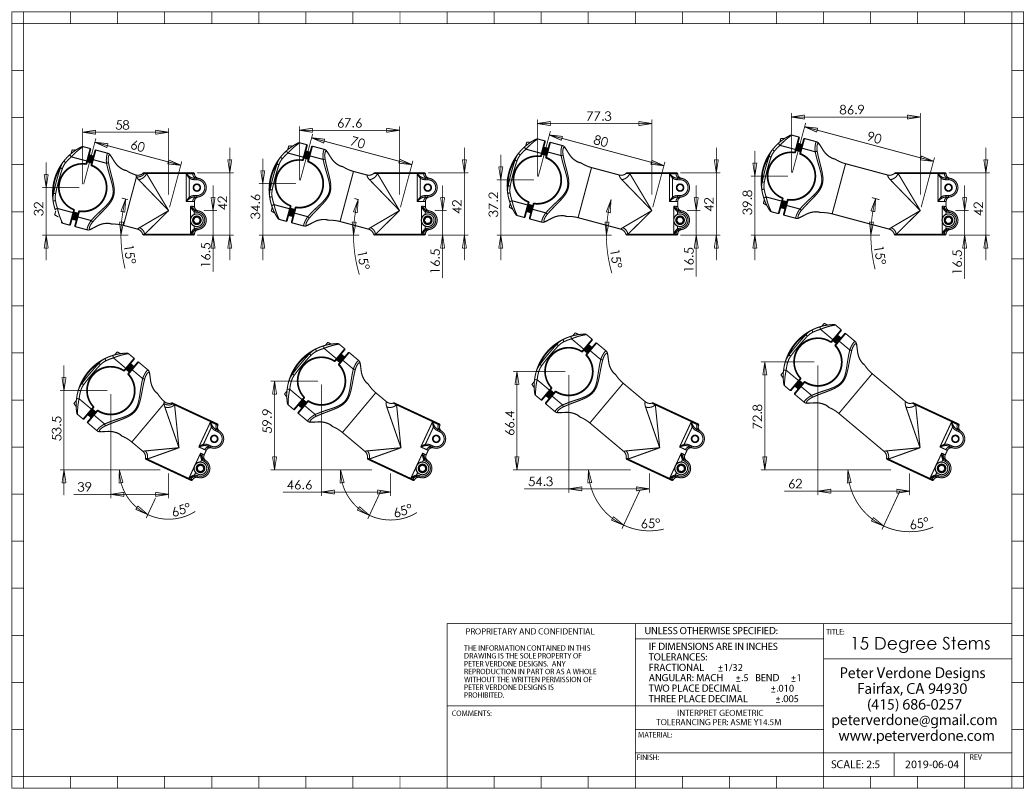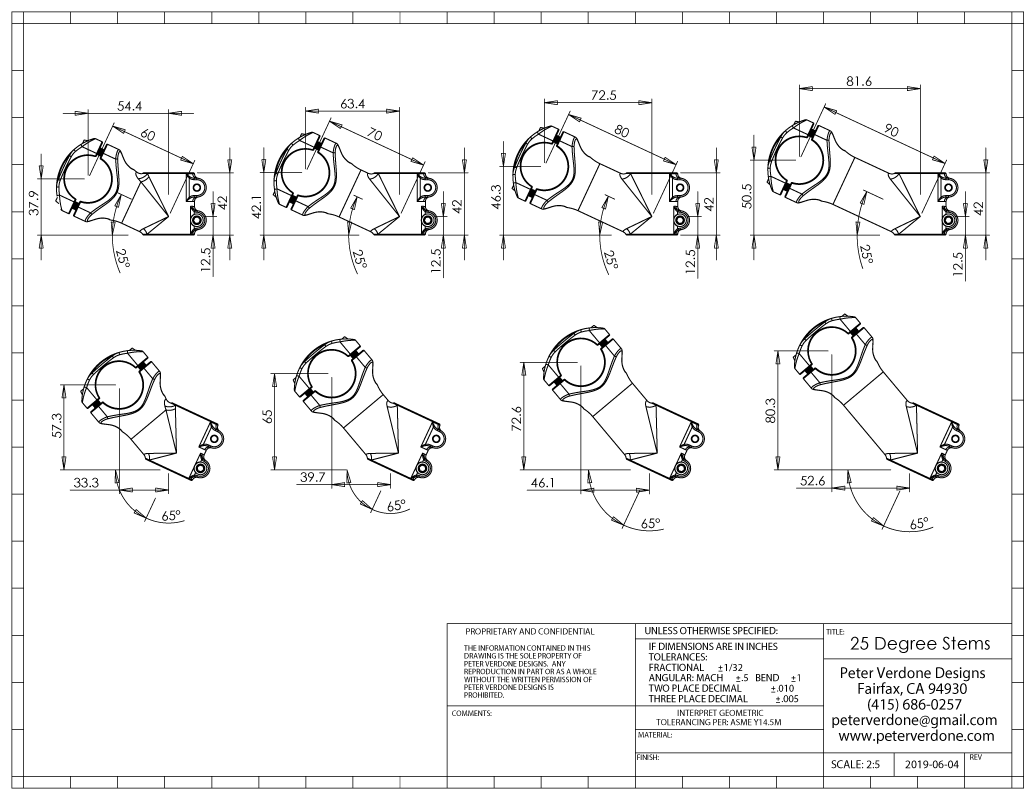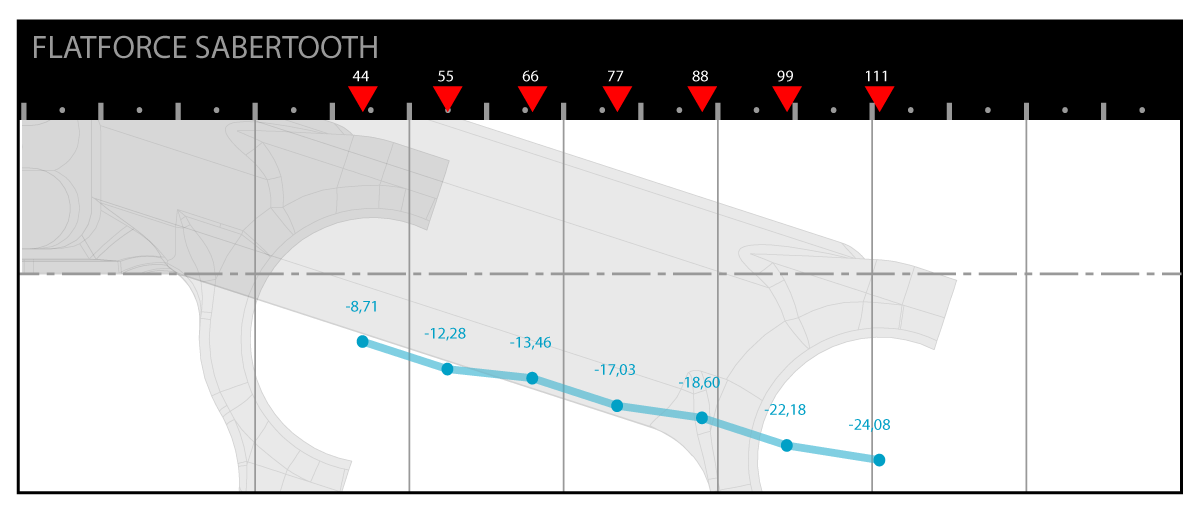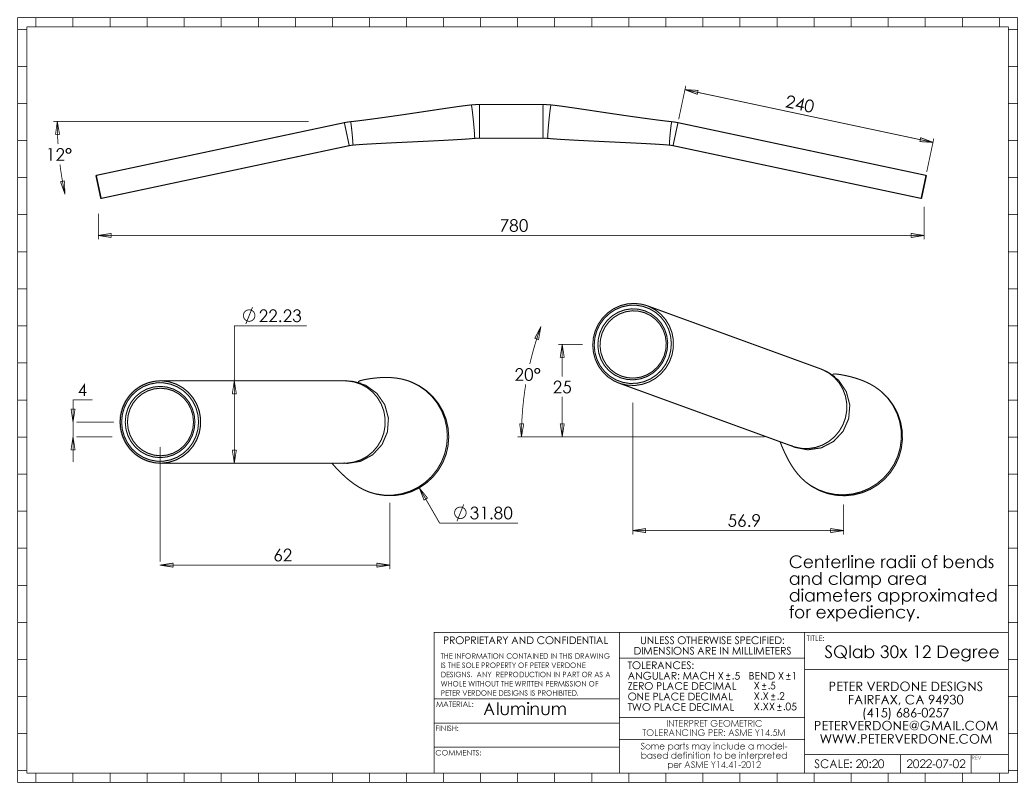For many years I’ve been discussing the problem with 35mm handlebars on bicycles. Having them specified on stock bicycles is especially bad. They are rarely a good choice for a custom bicycle. I’ve got piles of these parts in a bin leftover from years of working around this junk, replaced with 31.8mm parts. I’ve finally been forced to formally explain what is obvious.
It’s hard to understand why so many people have defended the interface so vigorously each time that I express my disgust for it. They lack any good reasons or logic behind their thinking. It is a hill to die on for many. Notice that the biggest fans are the worst at bike setup, fit, and often riding.
What do 35mm handlebars do exactly? Simply, they allow a lighter handlebar to be produced in carbon fiber at similar strength and stiffness to what we know works well. That’s pretty much it. A few grams saved in the bars, but a few added to the stem, and a terrible fit on the bike…unless you are really really lucky.
The primary problem with 35mm handlebars isn’t really the bars themselves. It’s the stem.
Let’s look at what we use the stem of a bicycle for; The stem works with the handlebars to place the handgrips in exactly the correct position relative to the pedals and saddle of the bike. This will be different in each use case that the bike is expected to be in and what particular rider is on board. This will also be different depending on the goals and size of the rider as well as the geometry of the frame, fork, headset, and handlebars. An XC bike, an enduro bike, and a downhill bike will have very different handgrip positions for the same user. Clearly, this is fussy stuff.
At times, we need to use very low stems. This happens for aggressive XC bikes but also for over forked or upsized trail and enduro bikes, like my wife’s recent build. In the past decade, we’ve been doing a lot of over forking, angle sets, and upsizing for improved performance on real trail for store bought bikes. This is what happens when every bit of performance is needed on the trails.
This is what a sorted bike looked like in 2015. An Angleset, a 180mm fork, and a slammed stem…on a converted headtube.
In other situations, we need high stems. Flat bar road and gravel bikes will often need an increase in grip height from what would otherwise be possible with regular parts. This also happens with smaller wheels and shorter forked mountain bikes. The shorter and steeper the stem, the more we can upsize the bike for faster off-road performance.
Here’s an absurd stem that I made in 2018 for the Bird of Prey. I was trying to very fine tune a fit and this worked out well.
Most of the diverse setups and fits that people need are easily accomplished within the huge range of lengths and angles of stems that exist in the marketplace, along with the many different bars, for the 31.8mm interface. Here are some arrays of 12 very commonly available generic stems that can be had in 31.8mm:
In addition to those generic stems, we have many exotic stems that do even more extreme positioning, the Syntace Flatforce stem in particular:
The stems that are available for 31.8mm is so much more extensive than I can show here. The point that I’m intending to make is that with a 31.8mm interface you have several hundred hand grip position options just by changing the stem.
On top of those, there are a huge number of the handlebar options in the 31.8mm interface. These, of course, cover the customary handlebars widths and sweep angles that many want. Additionally, notice that the modern high sweep angle handlebars that can be had from SQlabs or Salsa are not available in 35mm bar diameters.
Here’s a cool fact, a 31.8mm handlebar can be used with a stem that has a bar clamp diameter of 31.8mm OR 35.0mm (with a shim). A 35mm handlebar can only be used with stems with 35mm clamp diameters. This is obvious and should require no further explanation.
Another point about 31.8mm interface is that far more accessories work with them and are available for far less than the few available for 35mm.
Now, let’s look at the stem and handlebar options available for the 35mm interface.
The Race Face Aefect 35 stem is one that is produced with far more options than any other. A total of 5; 50, 60, 70, 80, and 90mm lengths all with a 6 degree angle. The Shimano PRO Tharsis 3Five Alloy Stem is almost exactly the same. That’s it. You may be able to find 35, 40, and 45mm sizing by sifting though a host of other brands, all with a 0-6 degree angle. That’s about 8 geometrically discrete stem choices across the entire market. None having any substantial rise or negation.
For handlebars, nearly all available 35mm bars have sweep values from 5-9 degree but there is some range in the rise of some of these bars. That’s not super useful given that most non-racer users should be moving toward bars with sweeps of 12-18 degrees.
Grip length and most inboard allowable position of controls and grips can be a real problem in the 35mm format. This isn’t exclusive to 35mm over 31.8mm but it easier for a bad designer to really limit what kind of range a rider will have available. I really do see this a lot with the 35mm stuff. In the old handlebar study that I show below (produced in 2019), notice that the Race Face Atlas 35/35 785mm bars have just 200mm of grip area to use. If you were a petite woman or rode fast in very tight trees, and you want to cut the bars down to 740mm. That would leave you about 177mm of room for controls and grips. That’s simply not enough. Even my wife needs at least 180mm of grip area on her setup.
You could argue that 35mm bars offer greater grip to prevent slip in the stem clamp. This is insane on the face of it. Notice that BMX bikes use 7/8″ clamp and have for the last 50 years. The bars on BMX bikes have far greater leverage working against the clamp and see far more forces at the end of those levers. Do they slip? No, they do not.
You could argue that 35mm bars are new and that’s why there are so little current choices, that more options are on the way. This can’t be true as the interface has been around for over 20 years and has been very widely circulated for more than a decade. If options were on the way, we would have seen them years ago. So that’s definitely not the reason.
I’m not saying here that you shouldn’t change your handlebars to 35mm if you have a particular need and your fit is accomplished with what you are able to purchase. That’s fine if that’s your thing.
What I am getting at is that providing this equipment on brand new complete bikes from service grade to ‘high performance’ is a terrible thing to do. It makes it hard to arrive at a good fit and performance envelope. Users get sucked into trying to find parts that are marginal for their goals as that is what is available in 35mm.
When a person buys a bike, one of the first things that they need to do is get the ergonomic geometry adjusted to work for their needs. This could easily accomplished by just swapping a stem if it is 31.8mm. When the bike comes with 35mm handlebars, we almost always have to just trash the 35mm parts (stem AND handlebars) and replace them both with 31.8mm. Then we can fine tune with relative ease.
Piling costs like this onto new riders that were just able to get on a bike and need reasonable accommodations is an industry shooting itself in the foot as these riders probably won’t make the changes, and will be on a bike that makes their experience worse than it reasonably could be. They may move on to something else.
I’ll admit, very few riders are interested in fit or performance. I see little work done on this front by users or shops around me. It’s just not really a thing that cyclists care about…fit. If the opposite were true, you’d hear other voices than mine about these same issues.



